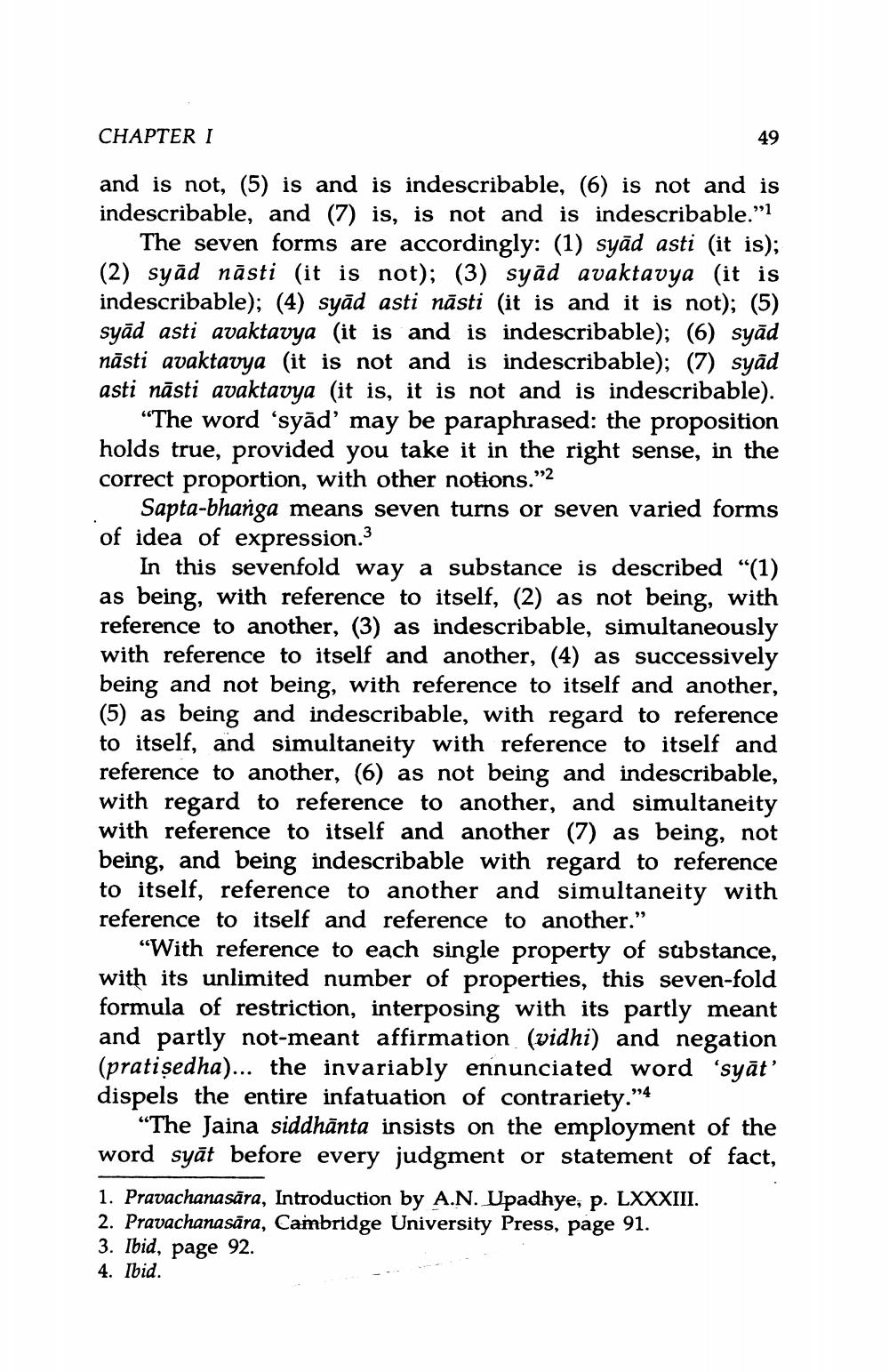________________
CHAPTER I
49
and is not, (5) is and is indescribable, (6) is not and is indescribable, and (7) is, is not and is indescribable.”l
The seven forms are accordingly: (1) syād asti (it is); (2) syād nāsti (it is not); (3) syād avaktavya (it is indescribable); (4) syād asti nāsti (it is and it is not); (5) syād asti avaktavya (it is and is indescribable); (6) syād nāsti avaktavya (it is not and is indescribable); (7) syād asti nāsti avaktavya (it is, it is not and is indescribable).
"The word 'syād' may be paraphrased: the proposition holds true, provided you take it in the right sense, in the correct proportion, with other notions."2
Sapta-bhanga means seven turns or seven varied forms of idea of expression.3
In this sevenfold way a substance is described "(1) as being, with reference to itself, (2) as not being, with reference to another, (3) as indescribable, simultaneously with reference to itself and another, (4) as successively being and not being, with reference to itself and another, (5) as being and indescribable, with regard to reference to itself, and simultaneity with reference to itself and reference to another, (6) as not being and indescribable, with regard to reference to another, and simultaneity with reference to itself and another (7) as being, not being, and being indescribable with regard to reference to itself, reference to another and simultaneity with reference to itself and reference to another.”
“With reference to each single property of substance, with its unlimited number of properties, this seven-fold formula of restriction, interposing with its partly meant and partly not-meant affirmation (vidhi) and negation (pratişedha)... the invariably ennunciated word 'syāt' dispels the entire infatuation of contrariety."4
“The Jaina siddhānta insists on the employment of the word syāt before every judgment or statement of fact, 1. Pravachanasāra, Introduction by A.N. Upadhye, p. LXXXIII. 2. Pravachanasara, Cambridge University Press, page 91. 3. Ibid, page 92. 4. Ibid.




